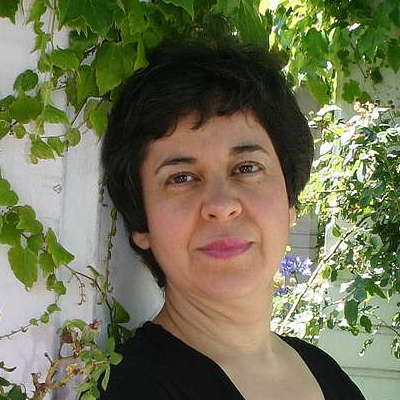 DISCUSSION: John Dante Prevedini leads a discussion about Composers, individuals or collective?, including contributions from David Arditti, Halida Dinova, Robert McCarney and Jane Stanley.
DISCUSSION: John Dante Prevedini leads a discussion about Composers, individuals or collective?, including contributions from David Arditti, Halida Dinova, Robert McCarney and Jane Stanley.
The Dame Wears Black
GIUSEPPE PENNISI reports on
Tchaikovsky's 'Pique Dame' in Naples
On 11 December 2019, Teatro di San Carlo in Naples inaugurated the 2019-2020 season with Pyotr Ilyich Tchaikovsky's Pique Dame (Pikovaya Dama, The Queen of Spades) in a joint production with the Hamburg Opera House. I saw and heard the 15 December 2019 performance. Reportedly, on the 11 December opening night, the audience was quite cold. Instead, on 15 December, the huge and very elegant theatre was full and the audience was enthusiastic. I attribute the different reactions to two determinants. Firstly, Neapolitans are very affectionate to their theatre and do not appreciate an almost unknown title for the opening of the season; in Naples, Pique Dame has had only two performances in 1963 as a part of a tour to the Zagreb Opera House and five in 2005 of a production imported from London's Royal Opera House. Secondly, the present production follows the German habit of only an intermission between the second and the third acts; this does not allow sufficient time for the ladies to flutter in their new evening dresses in the grand foyer and for the gentlemen to entertain conversations in their dinner jackets. Thus, part of the social function of a season's opening night was somewhat missing.
The opera deals with a decaying society and the self destruction of the protagonist - as discussed in previous reviews on 23 June 2015 and on 17 August 2018. The production emphasizes these themes; the stage direction by Willy Decker, the sets and costumes by Wolfgang Gussmann and the lighting by Hans Toelsted place the action in a timeless context where black and grey, albeit with some sprinkles of white, are the dominant colors. More specifically, most of the characters and chorus members are in dark grey or black. In a single set, where a few props, moving walls and projections are sufficient to give the idea of the various places where the action evolves, and with the chorus often as an immobile commentator of the plot, this Pique Dame reflects Tchaikovsky's mood well when he composed it in Florence. He was starting on the road toward suicide — three years later — and the dark Pique Dame and his sixth symphony were his requiem and funeral march. He was also in the most troublesome period for the search of his own sexual orientation. As compared with other recent productions of Pique Dame, in this staging there is a clear emphasis on the social class distance between Hermann, the protagonist, and the others as well on the sensual and erotic aspects, even in the old Countess' remembrance of her young days in Paris. The acting is excellent.
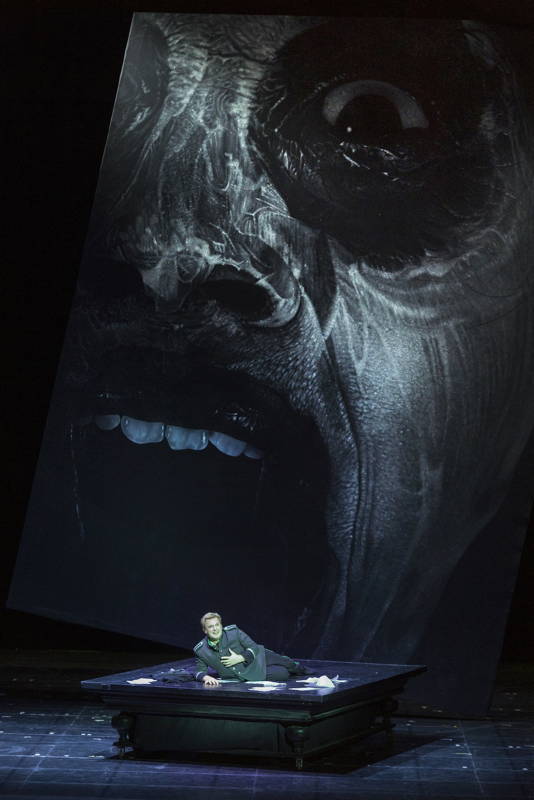
Misha Didyk as Herman in the Naples
production of Tchaikovsky's Pique Dame.
Photo © 2019 Francesco Squeglia
The pace is tense and intense. To provide a stronger impact, the musical rendering is not philological. There are two significant cuts: the introductory chorus in St Petersburg's summer garden in the first act, and the pastoral musical intermezzo during the party scene in the second act. These cuts make for swifter and more dramatic action, and accentuate the tragedy of the main characters as well as of the society around them. The pastoral intermezzo was included by Tchaikovsky because a ballet was a requirement of the Imperial Theatres where the opera had its debut. Altogether, there is a strong justification for the two cuts, especially in a production where desperation of the main characters and of the society surrounding them is the main theme.
I have often said that Pique Dame is Tchaikovsky's own requiem and funeral march. This is very apparent in this production. The Countess dies from a heart attack when she fears that Herman would shoot her if he knew the secret of winning cards when gambling.
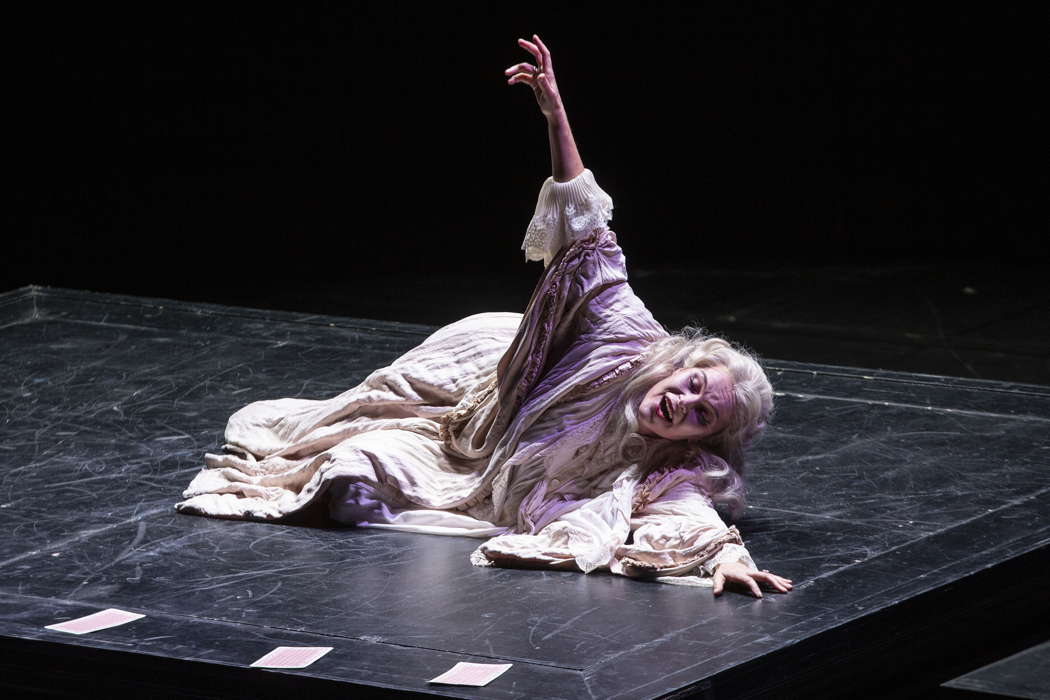
Julia Gertseva as the Countess in the Naples production of Tchaikovsky's Pique Dame. Photo © 2019 Luciano Romano
Liza is shot by Hermann accidentally when she realizes that Herman has been using her as a tool to enter the Countess' bedroom and grasp her gambling secret. Herman commits suicide when the ghost of the Countess tricks him into the cards' wrong combination. All the others are also on their way to tragic death. Pique Dame was composed at the end of nineteenth century; Tchaikovsky perceived the period not only as the end of his life, but also and mainly as the end of a world. Even the Empress Catherine the Great looks like an abstract funeral monument when she appears in the second act party. The Russian revolution was already knocking at the doors.
In my view, these aspects are useful to understand the musical features of the production. The theater's musical director, Juraj Valčuha, conducts the Teatro di San Carlo Orchestra. He conducts with wide arms and gives emphasis to the strings and woodwind: the cellos and the bassoon are key determinants in the funeral march of individuals as well as of a society. The orchestra becomes passionate in the sensual and erotic moments such as the seduction of Liza by Hermann and the Countess' recollection of her youth in Paris.
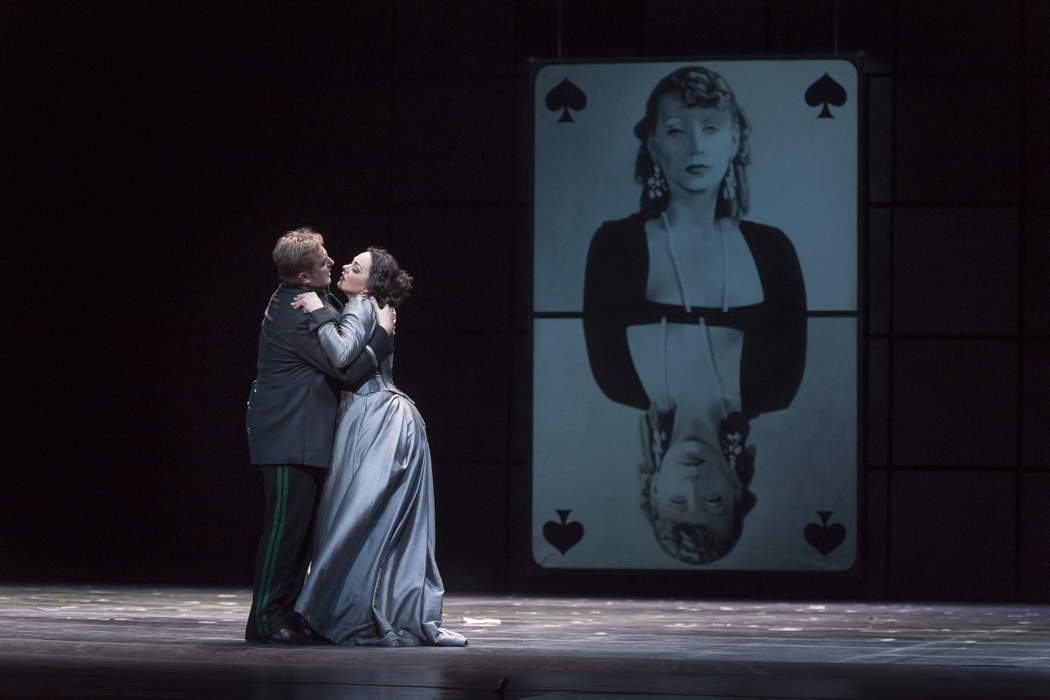
Misha Didyk as Herman and Anna Nechaeva as Liza in the Naples production of Tchaikovsky's Pique Dame. Photo © 2019 Francesco Squeglia
The singers are of the highest standards. They are too numerous to all be mentioned. Hermann is Misha Didyk, the real successor of Vladimir Galouzin for this taxing role which requires a Wagnerian heldentenor with a strong Russian flavor.
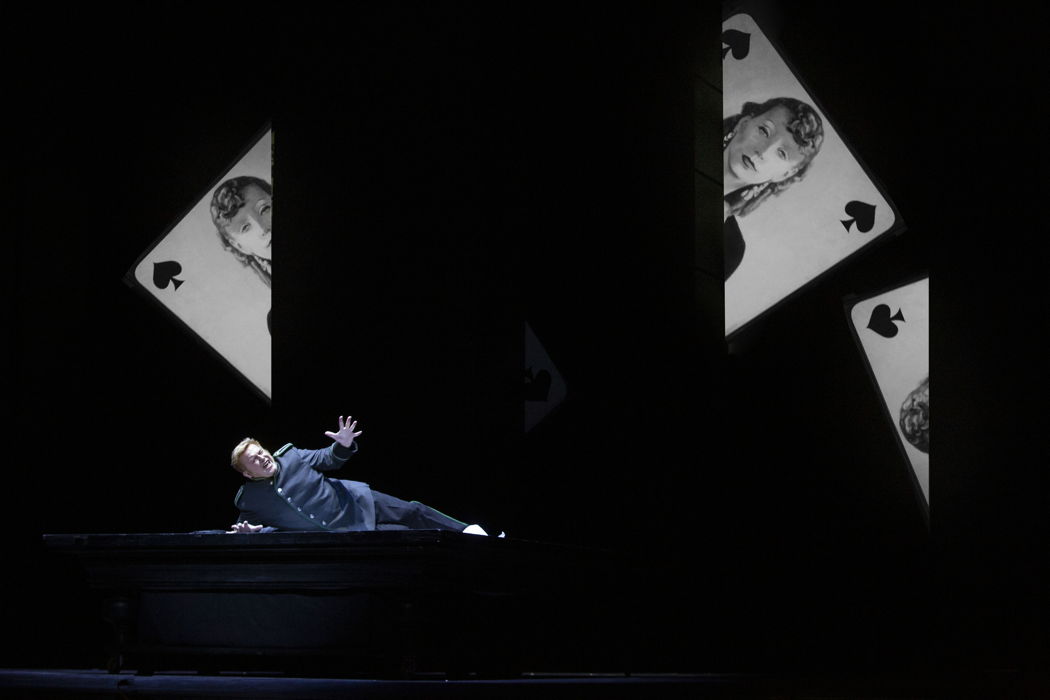
Misha Didyk as Herman in the Naples production of Tchaikovsky's Pique Dame. Photo © 2019 Luciano Romano
Liza is Anna Nechaeva, both a very solid dramatic soprano and a very good actress.
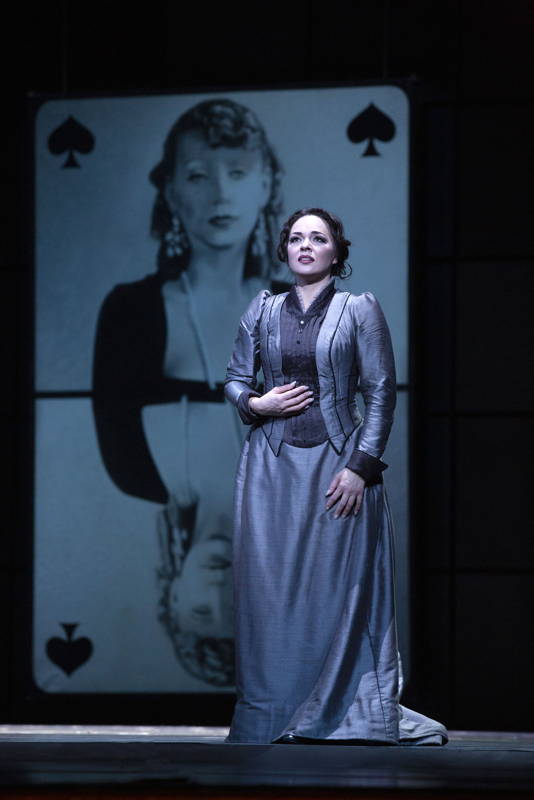
Anna Nechaeva as Liza in the Naples
production of Tchaikovsky's Pique Dame.
Photo © 2019 Luciano Romano
Julia Gersteva is a Countess with a colorful mezzo timbre. The baritone Maksim Aniskin is the Prince Eleckij; after his main aria, he received an open stage applause.
Copyright © 18 December 2019
Giuseppe Pennisi,
Rome, Italy



